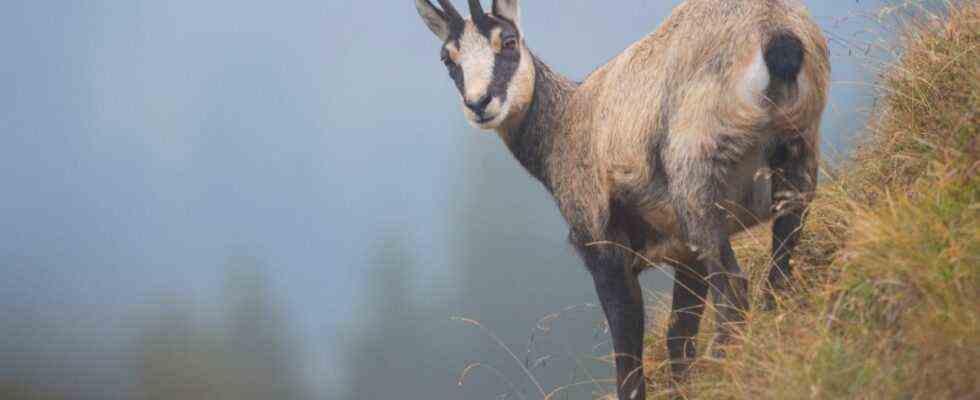After the publication of the first results of the large chamois study at the State Institute for Forests and Forestry (LWF), a violent dispute broke out. The President of the Bavarian Hunting Association and CSU member of the state parliament Ernst Weidenbusch not only doubts the researchers’ numbers. Rather, he apodictically states: “The chamois in Bavaria is endangered.” The chairman of the “Wildes Bayern” association, Christine Miller, who feels very committed to protecting the chamois, also criticizes harshly. From their point of view, the data from the LWF researchers are unsuitable as evidence for the conclusion of Michaela Kaniber’s Ministry of Agriculture that concerns about insufficient chamois stocks are unfounded. Miller calls such statements “shameless” and “cheeky”.
LWF and the Ministry of Forestry strongly contradict the allegations. They emphasize that all published results were based on scientifically recognized and best practices. “Misinterpretations, unsubstantiated claims or personal discredits do not contribute to a valuable debate,” says a ministry spokesman. “We cannot explain how the president of the hunting association came up with his allegations.” The LWF emphasizes that the results of the project were only published after careful examination, and that they are by no means unsecured interim results.
The then Minister Brunner started the LWF project in 2016
The LWF research project is the most complex that there has ever been on Gams in Bavaria. The background: Hunting associations and organizations such as the “Wildes Bayern” association have been claiming for years that far too many chamois are hunted in the Bavarian mountains. She is convinced that fewer and fewer chamois are living in the Free State, and the populations are so unstable that in some regions populations could be about to die out. The allegations are so severe that the then Forestry Minister Helmut Brunner started the LWF project in 2016. Its results, of course, point in a completely different direction: In the two study areas on the Kampenwand (district of Rosenheim) and on the Soierngruppe (district of Garmisch-Partenkirchen), the scientists determined a numerically extremely large gam population of around 1350 animals – 350 on the Kampenwand and 1000 at the Soierngruppe. They also found no evidence that the chamois are doing badly in any way. On the contrary: According to the LWF, everything indicates that they are vital and fit.
A central component of the project is the determination of the number of chamois on Kampenwand and Soierngruppe as precisely as possible. To do this, the research groups looked for faecal samples from chamois in both areas and had them genetically analyzed. According to the LWF, almost 800 chamois were identified in these analyzes alone. However, it is impossible to determine exact inventory figures using such direct methods. The reason: You never find fecal samples from all chamois in the respective study area. There is always an unreported number of unrecorded animals. Therefore, in a second step, an elaborate, internationally recognized and globally applied statistical method was used, and thus extrapolated from the approximately 800 chamois actually determined to a total of around 1350 chamois. In order to avoid mistakes, they sought advice from renowned experts, including a Norwegian research group that is very experienced with the method.
Ernst Weidenbusch, head of the Bavarian Hunting Association, doubts the results of the large chamois study at the State Institute for Forests and Forestry.
(Photo: Matthias Balk / dpa)
Jägerpräsident Weidenbusch had previously stated that the ministry only had estimates from a Norwegian group of scientists who were supposed to confirm the LWF’s previous statements. “We in the Bavarian Hunting Association cannot explain any particular expertise the Norwegians have for the chamois,” said Weidenbusch. “It is possible that no Central European scientists have been found who wanted to be partly responsible for this increase in the gam population from actually 800 individuals to an estimated 1,350.” Weidenbusch accused the LWF project manager, forest scientist Alois Zollner, of “having deceived the public for years” and “now replacing facts with speculations”.
Meanwhile, there are new indications that the chamois are better off in other Bavarian mountain regions than is suspected in circles of the hunting association. Scientific monitoring has also been running at the Berchtesgaden National Park since 2020 after a long break. First extrapolations of the previous counting results indicate that between 1900 and 2400 chamois live in the national park mountains. This is not just more than there was in the last chamois count in 2012. Rather, it corresponds almost exactly to the results of the LWF for the Soiern group – if you take into account that the study area in the national park is a good twice as large as that at the Soiern group.
In circles of the hunting association there are voices that one should curb oneself at the top of the association in the choice of words towards the LWF and deal seriously with the research project. Of course, that should happen critically.

